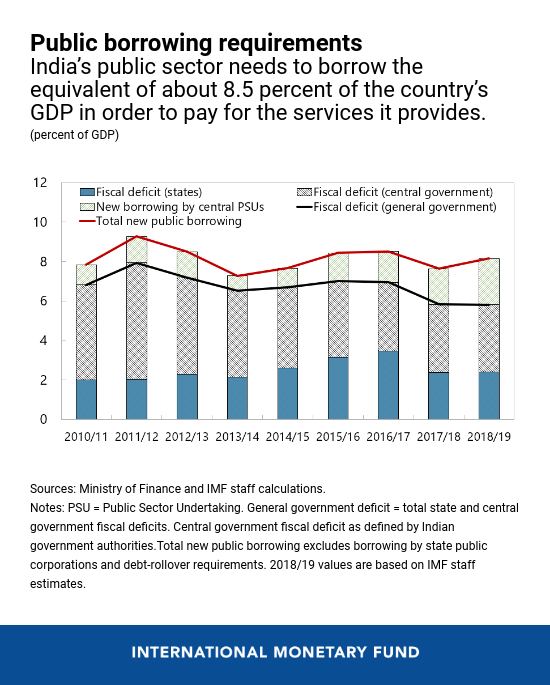
Young man texting next to a rickshaw in Jodhpur, India. Financing new social initiatives and development projects will benefit India’s younger generations, but will require prudent use of public funds (photo: Xavier Arnau, istockphotos)
More Fiscal Transparency Would Mean Better Economic Policy in India
December 23, 2019
Economic development projects and enhanced social initiatives in India will be vital in the coming years. But to generate the revenue needed to get them off the ground, India’s debt—among the highest in emerging markets—must be reduced. Despite some improvement in reported fiscal deficits, debt as a share of GDP remains little changed over the past decade partly due to increases in off-budget financing.
This large public-sector footprint also ties up financial resources that could otherwise be drawn upon for private investment. Reforms to improve budgeting and enhance transparency in fiscal reporting have a vital role to play in putting debt on a durable downward trajectory.
Much of the discussion regarding fiscal policies in India focuses on its central and states' government deficits. However, a broader and more relevant measure of the government’s fiscal position—and its bearing on the economy—is the public sector’s borrowing requirement, which has risen to about 8.5 percent of GDP, according to IMF staff estimates. This estimate incorporates some information on central government expenditures, which are financed off-budget through other mechanisms, but is missing information on activities of state public enterprises and lower tiers of government.
Benefits of transparency
Getting the word out on India’s true fiscal stance could yield significant benefits for policymakers and the Indian economy. For example, a more accurate picture of the fiscal stance would better inform decisions regarding how much stimulus should be provided in a cyclical downturn. The government could increase its credibility vis-à-vis financial markets and enjoy more favorable borrowing conditions as a result. And greater fiscal transparency would also boost the ability of investors and citizens to make informed and efficient financial and economic decisions.
In the coming years, India should recommit to debt reduction by reducing its public sector borrowing requirement. Measures to enhance fiscal transparency and improve reporting will play a vital role in this process. As part of the Group of 20, India has already committed to publishing general government fiscal information on a quarterly basis, which should enable better monitoring and faster policy reactions. As a complement, India will have to improve the collection and disclosure of information on public enterprises, especially at the state level, in order to better anticipate possible cases of financial distress and minimize their costs for taxpayers.
Yet, more information does not necessarily imply more transparency for citizens. Information is currently scattered across many documents and websites, making it difficult to obtain a comprehensive account of the use of public resources. Going forward, the federal and state governments should look to provide the public with more user-friendly and forward-looking information and narratives and adopt common standards to ensure that citizens in all states have equal access to fiscal information.








